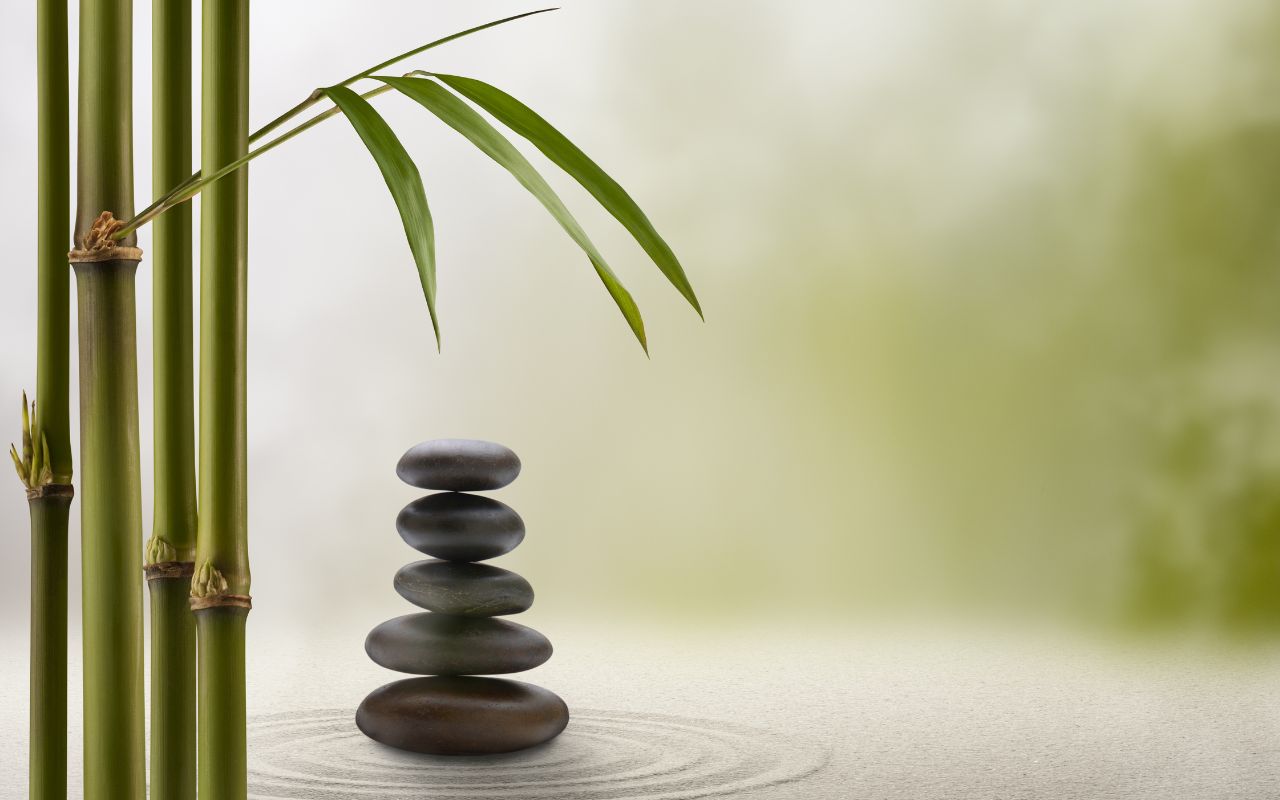In our ever-busy modern world, anxiety has become an all-too-common companion. While there are many ways to tackle anxiety, one effective yet often overlooked method is utilizing the ancient art of Feng Shui. The practice of Feng Shui, originating from China, centers around harmonizing your living space with the natural world. This article delves into how you can leverage Feng Shui principles to create a serene, anxiety-free environment in your home.
The Foundation of Feng Shui: Understanding Energy Flow
At its core, Feng Shui is about your home's energy flow, or ‘Chi'. Chi is the life force energy that permeates all living things, and how it moves through and interacts with your environment can significantly impact your well-being. According to Feng Shui principles, a balanced flow of Chi promotes health, prosperity, and happiness, while disrupted or stagnant energy can lead to stress, anxiety, and misfortune.
One of the first steps in implementing Feng Shui is to assess the energy flow in your home. Walk through each room and observe how you feel in that space. The energy is likely stagnant or blocked if a room feels cramped, dark, or cluttered. Conversely, rooms that feel bright, open, and comfortable will likely have a good flow of Chi.
Releasing Stagnant Energy
To release stagnant energy, start by decluttering. Clutter not only physically obstructs space but also energetically blocks Chi. Pay special attention to forgotten spaces like cupboards, attics, and corners, as these areas often harbor stagnant energy. As a Feng Shui expert, Patricia Lohan suggests that turning to these neglected spaces can revitalize them.
Moreover, consider performing an energy-clearing ritual. This could involve smudging your space with sage or utilizing sound healing tools like bells or singing bowls. Such practices can help disperse stagnant energy, promoting a lighter and more refreshing atmosphere.
For more tips on clearing your space, you can explore Patricia Lohan's video on clearing negative energy.
Creating a Calm and Harmonious Environment
Once you’ve cleared the stagnant energy, the next step is to create an environment that supports tranquility and reduces anxiety. This involves mindfully arranging and decorating your space, guided by Feng Shui principles.
Choosing Calming Colors
Colors are crucial in Feng Shui as they are associated with different elements and emotions. For a calming environment, opt for colors that promote peace and relaxation. Shades of blue and green are particularly effective as they are linked to the elements of water and wood, respectively, which represent calmness and growth.
Incorporating these colors into your home can be as simple as repainting a room, adding new cushions, or changing your bedsheets. Choosing hues that resonate with you is essential since your emotional response to color creates a soothing effect.
Arranging Furniture for Optimal Flow
Furniture arrangement is another critical factor. In Feng Shui, furniture placement can either facilitate or hinder the flow of Chi. For instance, ensure that your furniture does not block doorways or pathways, as this can obstruct energy flow. Aim for a layout that allows free movement and makes the room feel spacious.
Particular attention should be paid to the placement of your bed. According to Feng Shui principles, the bed should be in the ‘commanding position,' meaning you should be able to see the door while lying in bed, but it should not be directly in line with the door. This placement fosters a sense of security and control, vital for restful sleep and reduced anxiety.
Incorporating Natural Elements
Bringing elements of nature into your home can significantly enhance positive energy flow. Natural elements such as plants, water features, and natural light improve mood and reduce stress. Plants purify the air and introduce the wood element, symbolizing growth and vitality. Ensure your plants are healthy and vibrant, as neglected plants can have the opposite effect.
Water features, like small fountains, can introduce the calming energy of water. However, it's essential to keep them clean and ensure water flows, as stagnant water can bring negative energy.
You can read about Feng Shui principles in remodeling for more insights on incorporating natural elements.
Art and Decor: Reflecting Peace and Positivity
The artwork and decor in your home can also influence your mental state. Choose pieces that evoke feelings of calmness and joy. Nature scenes, in particular, can be very soothing. Artwork that depicts horizons or serene landscapes can help reduce stress and create a sense of spaciousness.
Additionally, consider the Bagua map, a fundamental tool in Feng Shui that helps you understand the energetic relationships of different areas of your home. By overlaying the Bagua map on your floor plan, you can see which parts of your home correspond to various aspects of your life, such as health, relationships, or career. Enhance each area with appropriate colors, elements, and symbols to support positive energy flow. To delve deeper into using the Bagua map, visit this comprehensive guide.
Minimizing Distractions and Creating Quiet Spaces
In today’s hyper-connected world, creating spaces in your home where you can escape distractions and find peace is essential. Designate a quiet corner or room for relaxation and mindfulness practices. This space should be free from electronic devices and filled with items that promote tranquility, such as soft cushions, soothing scents, and calming artwork.
A designated quiet space can be incredibly beneficial for reducing anxiety, providing a sanctuary to retreat and recharge. Whether it's a cozy reading nook, a meditation corner, or a serene garden spot, ensure it feels comfortable and inviting.
Maintaining the Flow: Regular Purification and Intention Setting
Maintaining positive energy in your home requires regular attention and care. To prevent the buildup of negative energy, regularly clean and purify your space. This can be as simple as opening windows to let in fresh air, regularly cleaning surfaces, and occasionally performing energy-clearing rituals.
Setting intentions is also a powerful practice in Feng Shui. Take a moment each day to set a positive intention for your space. This could be as simple as visualizing light and positivity filling your home or expressing gratitude for your surroundings. Intention setting helps to align the energy of your space with your personal goals and aspirations, creating a harmonious and supportive environment.
Feng Shui in Specific Areas: Tailoring the Approach
Different areas of your home serve various purposes and thus require tailored Feng Shui approaches to maximize their benefits.
The Bedroom: A Sanctuary for Rest
The bedroom should be a sanctuary for rest and rejuvenation. To create a serene atmosphere, use soft, natural fabrics for bedding and curtains, and choose earthy, calming colors. Ensure that the bed is in the commanding position and that the space under the bed is clutter-free.
Personalize your bedroom with items that have positive associations. Avoid work-related items or exercise equipment, as these can bring stressful energy into a space meant for relaxation.
The Kitchen: Nourishment and Prosperity
The kitchen is associated with nourishment and prosperity. Keep it clean and well-organized to promote a sense of abundance. Balance the five elements—wood, fire, earth, metal, and water—by incorporating various materials and colors representing each element. For example, wooden cabinets represent wood, the stove represents fire, and the sink represents water.
Ensure that the stove and sink are not directly opposite, as this can create conflicting energy. Instead, aim for a harmonious layout that facilitates a smooth flow of Chi.
The Home Office: Enhancing Productivity
A well-designed home office is essential for productivity and focus for those who work from home. Position your desk so you can see the entrance, promoting a sense of control and security. Keep the space organized and clutter-free; a tidy environment can enhance mental clarity and focus.
Incorporate elements that inspire you, such as motivational quotes, art, or items that symbolize your goals and aspirations. Creating a positive and energizing workspace can enhance your productivity and reduce work-related stress.
Conclusion: Embracing the Transformation
Feng Shui offers a holistic approach to reducing anxiety and creating a peaceful environment. By understanding and applying its principles, you can transform your home into a sanctuary that supports your mental and emotional well-being. Remember that feng shui is about making physical adjustments and aligning your space with your intentions and aspirations.
Start with small changes, observe how they affect your mood and energy, and gradually incorporate more elements of Feng Shui into your home. Whether it’s through decluttering, adjusting your furniture layout, or introducing calming colors and natural elements, each step brings you closer to a harmonious and anxiety-free living space.
As you embrace the principles of Feng Shui, you’ll find that your home looks more beautiful, serene, and supportive. This transformation can profoundly impact your overall well-being, helping you navigate life with greater calm and clarity.
Incorporating Feng Shui into your home is a journey of continuous improvement and mindfulness. By cultivating a space that resonates with positive energy, you nurture your mind and spirit, paving the way for a more balanced and harmonious life.










